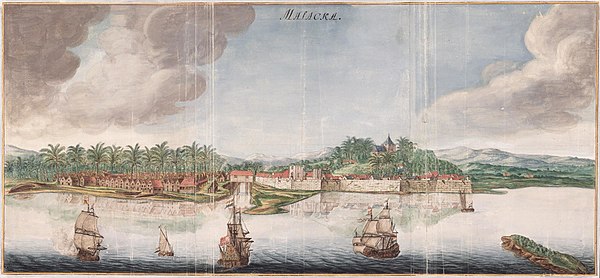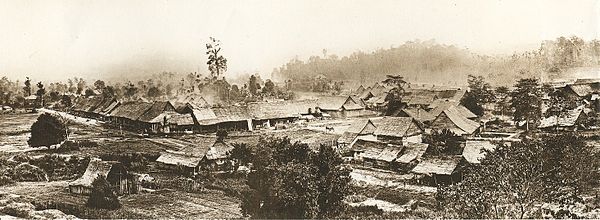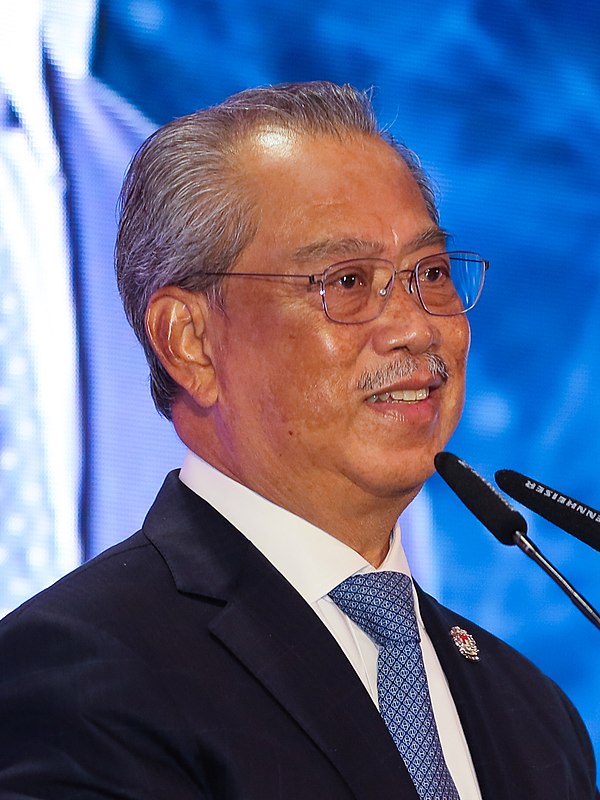
History of Malaysia
Malaysia is a modern concept, created in the second half of the 20th century. However, contemporary Malaysia regards the entire history of Malaya and Borneo, spanning thousands of years back to prehistoric times, as its own history.
Hinduism and Buddhism from India and China dominated early regional history, reaching their peak from the 7th to the 13th centuries during the reign of the Sumatra-based Srivijaya civilisation. Islam made its initial presence in the Malay Peninsula as early as the 10th century, but it was during the 15th century that the religion firmly took root at least among the court elites, which saw the rise of several sultanates; the most prominent were the Sultanate of Malacca and the Sultanate of Brunei.[1]
The Portuguese were the first European colonial power to establish themselves on the Malay Peninsula and Southeast Asia, capturing Malacca in 1511. This event led to the establishment of several sultanates such as Johor and Perak. Dutch hegemony over the Malay sultanates increased during the course of the 17th to 18th century, capturing Malacca in 1641 with the aid of Johor. In the 19th century, the English ultimately gained hegemony across the territory that is now Malaysia. The Anglo-Dutch Treaty of 1824 defined the boundaries between British Malaya and the Dutch East Indies (which became Indonesia), and the Anglo-Siamese Treaty of 1909 defined the boundaries between British Malaya and Siam (which became Thailand). The fourth phase of foreign influence was a wave of immigration of Chinese and Indian workers to meet the needs created by the colonial economy in the Malay Peninsula and Borneo.[2]
The Japanese invasion during World War II ended British rule in Malaya. After the Empire of Japan was defeated by the Allies, the Malayan Union was established in 1946 and was reorganized as the Federation of Malaya in 1948. In the Peninsula, the Malayan Communist Party (MCP) took up arms against the British and the tension led to the declaration of emergency rule from 1948 to 1960. A forceful military response to the communist insurgency, followed by the Baling Talks in 1955, led to Malayan Independence on August 31, 1957, through diplomatic negotiation with the British.[3] On 16 September 1963, the Federation of Malaysia was formed; in August 1965, Singapore was expelled from the federation and became a separate independent country.[4] A racial riot in 1969, brought about the imposition of emergency rule, the suspension of parliament and the proclamation of the Rukun Negara, a national philosophy promoting unity among citizens.[5] The New Economic Policy (NEP) adopted in 1971 sought to eradicate poverty and restructure society to eliminate the identification of race with economic function.[6] Under Prime Minister Mahathir Mohamad, there was a period of rapid economic growth and urbanization in the country beginning in the 1980s;[7] the previous economic policy was succeeded by the National Development Policy (NDP) from 1991 to 2000.[8] The late 1990s Asian financial crisis impacted the country, nearly causing their currency, stock, and property markets to crash; however, they later recovered.[9] Early in 2020, Malaysia underwent a political crisis.[10] This period, along with the COVID-19 pandemic caused a political, health, social and economic crisis.[11] The 2022 general election resulted in the first-ever hung parliament in the country's history[12] and Anwar Ibrahim became Malaysia's prime minister on November 24, 2022.[13]




































